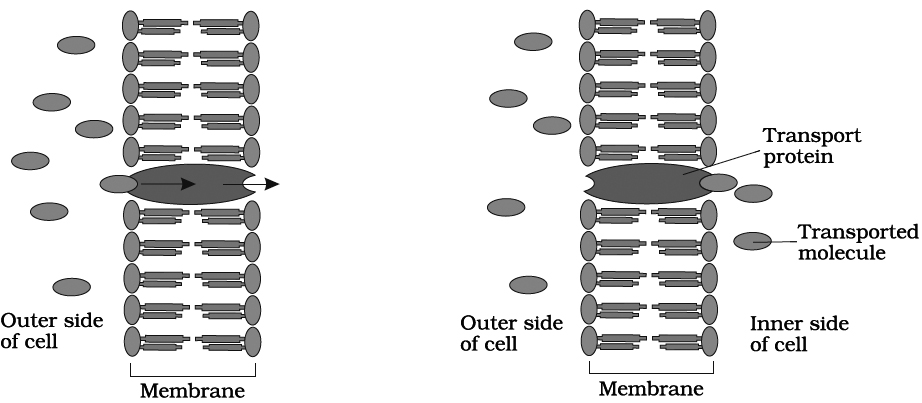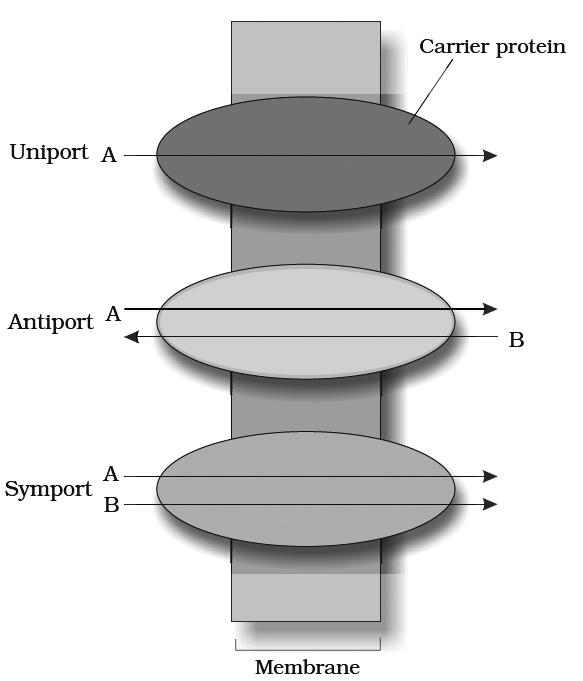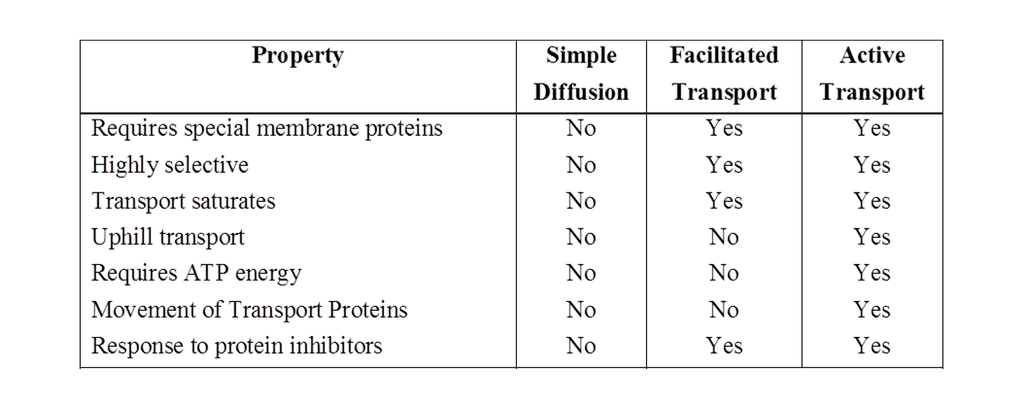- Books Name
- ACME SMART COACHING Biology Book
- Publication
- ACME SMART PUBLICATION
- Course
- CBSE Class 11
- Subject
- Biology
Different types of transport
Plants show transport of various substances over short distances and long distances.
Sport-distance transport of substances occurs through diffusion and cytoplasmic streaming supplemented by active transport.
Long distance transport of materials occurs through vascular system i.e. xylem and phloem. This is also known as translocation. The direction of translocation is essentially unidirectional in case of water. It is multidirectional in case of minerals and organic solutes.
Transport of materials into and out of the cell is performed by number of methods like (I) Diffusion, (II) Facilitated diffusion and (III) Active transport.
Diffusion
The movement of molecules or ions from the region of higher concentration to the region of lower concentration, until the molecules are evenly distributed throughout the available space is known as diffusion.
The diffusing particles create a certain pressure called as diffusion pressure (DP) which is directly proportional to the number or concentration of diffusing particles. The molecules move from higher DP to lower DP.
Characteristics of Diffusion
Following are the important characteristics of diffusion:
1.The molecules (or ions) diffuse from region of their higher concentration to region of their lower concentration (passive process). This continues till an equilibrium is established.
2.The diffusing molecules move randomly along concentration gradient.
3.The direction of diffusion of one substance is independent of the movement of another substance.
4.It is very important to plants since it is the only means for gaseous movement within the plant body.
Concept Builder
Factors affecting the rate of diffusion
1. Temperature. The rate of diffusion increases with increase in temperature. This is because free energy of molecules increases with rise in temperature.
2. Density of molecules. It shares inverse root relation. This can be deduced from Grahm's law of diffusion which states that the rate of diffusion of gases is inversely proportional to the square root of their densities (density = mass per unit volume).
r = ![]()
where, r = rate of diffusion and d = density
3. Medium in which diffusion occurs. The rate at diffusion would be slower if the medium is concentrated, i.e., increase in the number of foreign molecules causes the rate of diffusion to decrease. Thus a gas would diffuse more rapidly in vacuum than in air.
4. Diffusion pressure gradient (DPG). It is the difference in the concentration of the diffusing molecules between one area and another over a specific distance. The steeper is the diffusion, pressure gradient, the faster is the rate of diffusion.
I. Facilitated diffusion
The diffusion of hydrophilic substances along the concentration gradient through fixed membrane transport protein without energy involvement is called facilitated diffusion.
The diffusion of any substance across a membrane also depends on its solubility in lipids, the major constituent of the membrane.
Substances soluble in lipids diffuse through the membrane faster.
Facilitated diffusion cannot cause net transport of molecules from a low to a high concentration, this would require input of energy.
Transport rate reaches a maximum when all of the protein transporters are being used (saturation).
It is very specific. It is sensitive to inhibitors which react with protein side chains.
The porins form huge pores in the outer membranes of the plastids, mitochondria and some bacteria allowing molecules upto the size of small proteins to pass through.
Water channels are made up of eight different types of aquaporins.

Passive symports and antiports
a.Uniport : When a molecule moves across a membrane independent of other molecules.
a.Cotransport: When two types of molecules move together with the help of carrier protein. It is of two types:
(i) Symport: Both molecules cross the membrane in the same direction at the same time.
(ii) Antiport: Both molecules move in opposite direction.

III. Active transport
Transport of materials across a membrane with the help of mobile carrier protein and ATP.
It is an uphill transport i.e., against concentration gradient and is faster than passive transport.
The rate of active transport reaches a maximum when all the protein pumps have been used in transport this is called saturation effect.
Carrier proteins are highly specific like enzymes.
They are also sensitive to inhibitors that react with protein side chains.


 ACME SMART PUBLICATION
ACME SMART PUBLICATION
